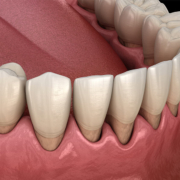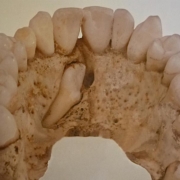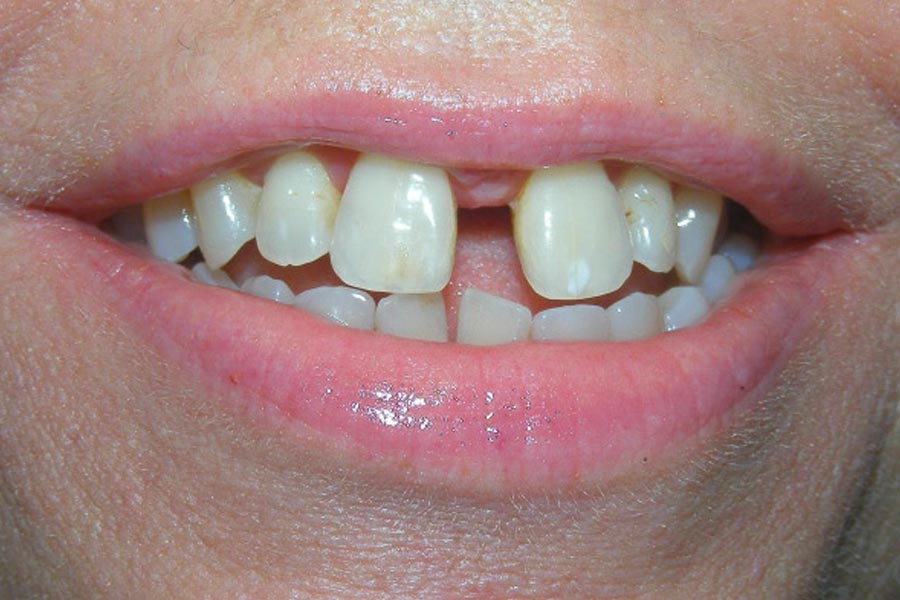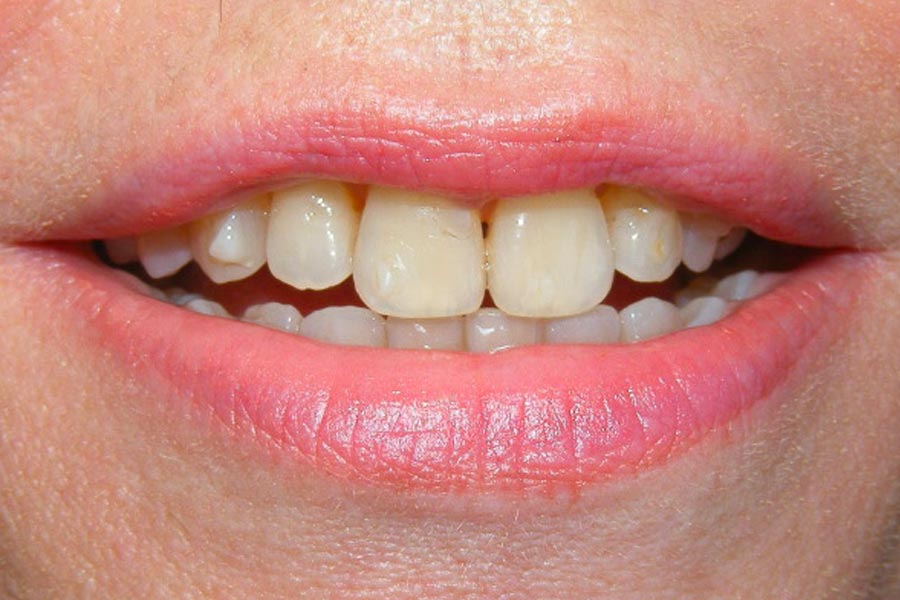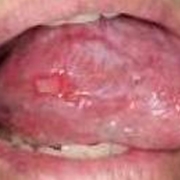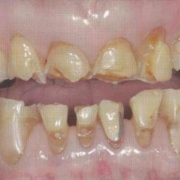Gum recession is a problem that affects many adults, especially over 40, and can be unsightly if it shows on smiling. In some cases it can be a sign of gum disease (periodontitis) but for others it can be a result over-zealous brushing, thin gums (a thin tissue biotype), tooth grinding (bruxism) and it can also be related to small areas of missing bone (dehiscence). I often look out for these areas of dehiscence on skulls in museums and my next article about the MARY ROSE will demonstrate this.
This lady clearly showed gum recession on the two front teeth when she smiled. One tooth also has a very dark root (dead tooth). We decided to extract the dark tooth and move the canine tooth, behind it, into its position. Often this type of recession that shows on smiling needs a gum transplant from the back of the mouth (free gingival graft) to repair it
There was almost total resolution of the recession on the other affected front tooth (see blue arrow) which is great news as it saved her from an operation with my Periodontist friend.

